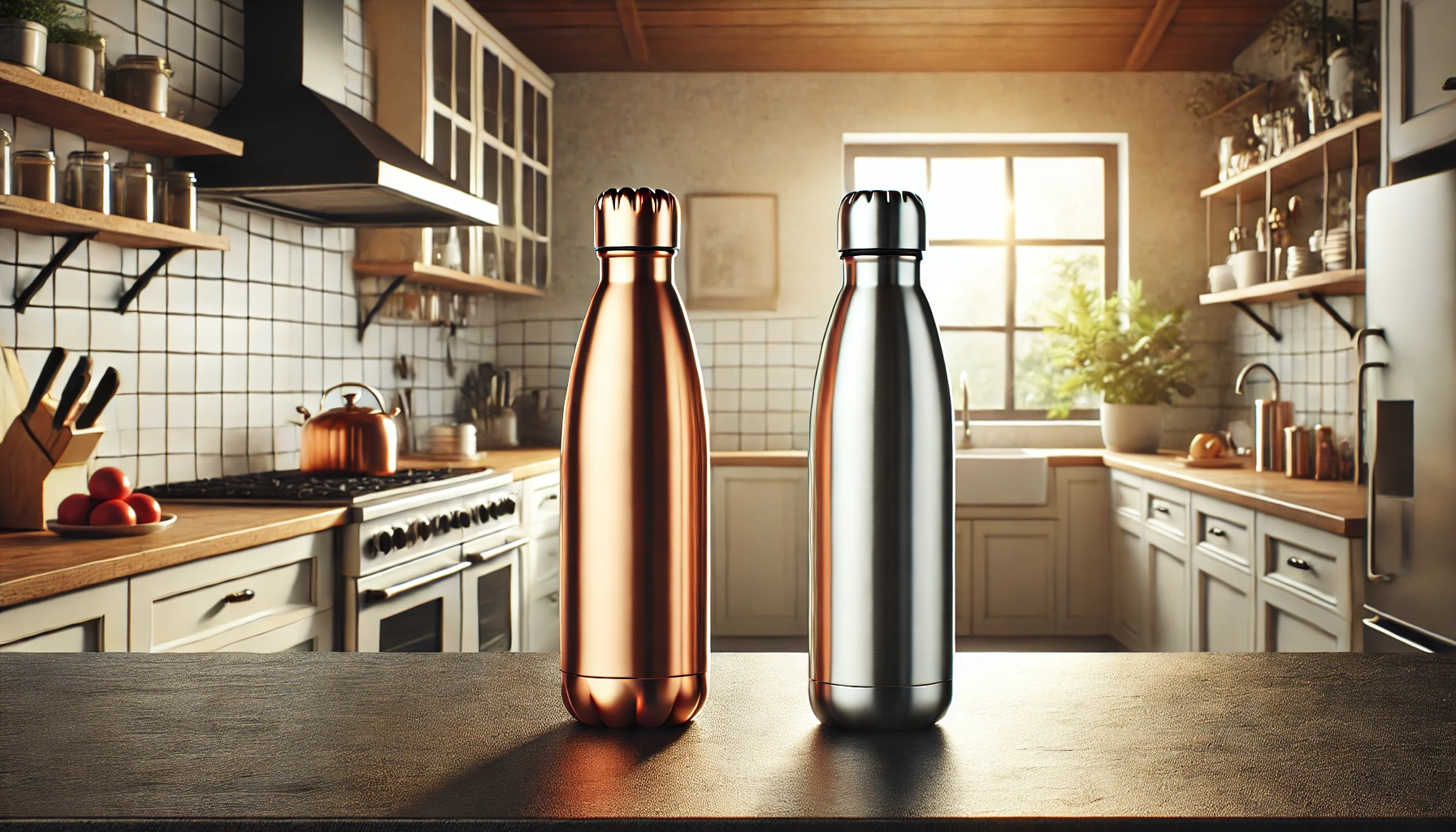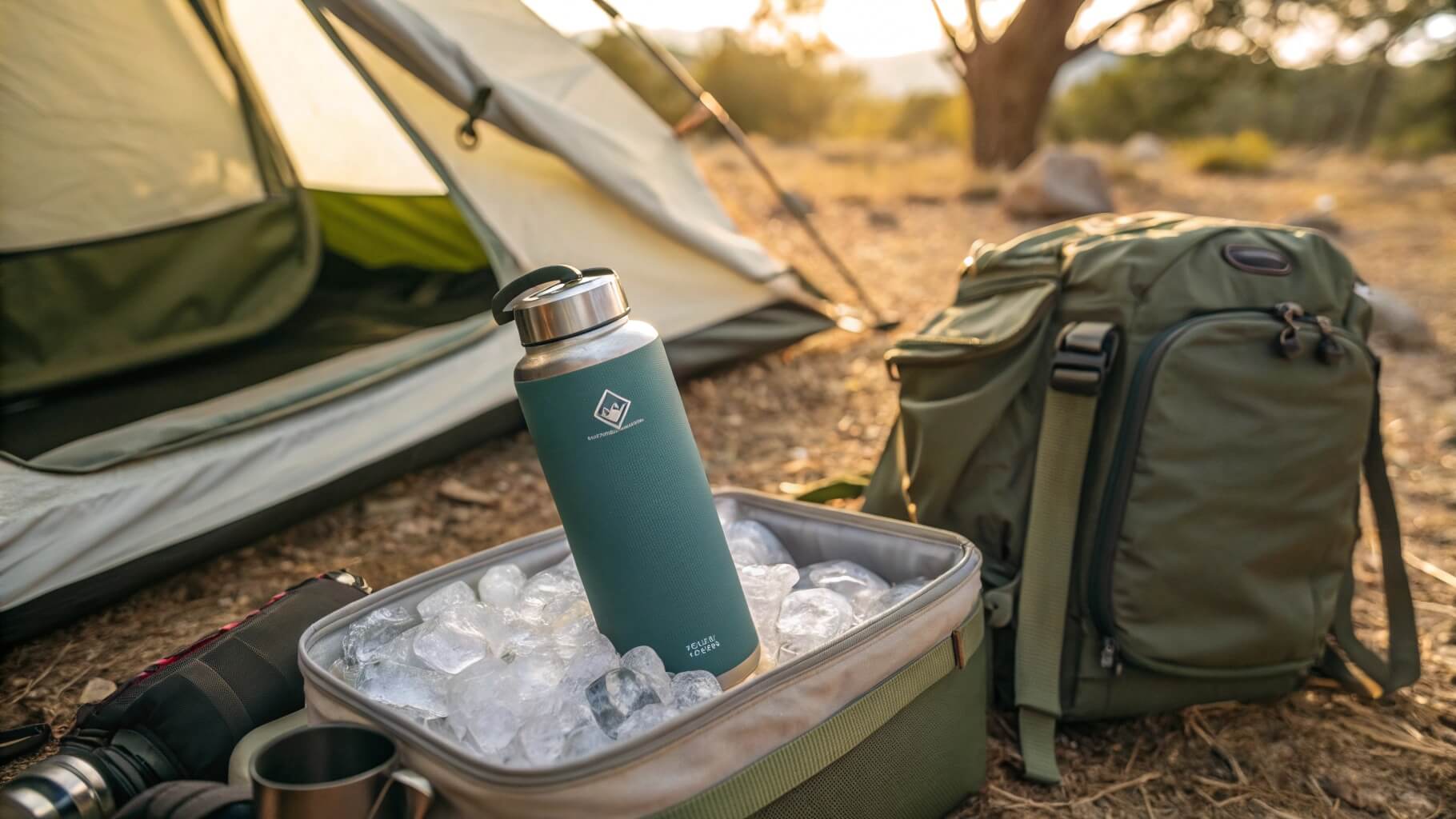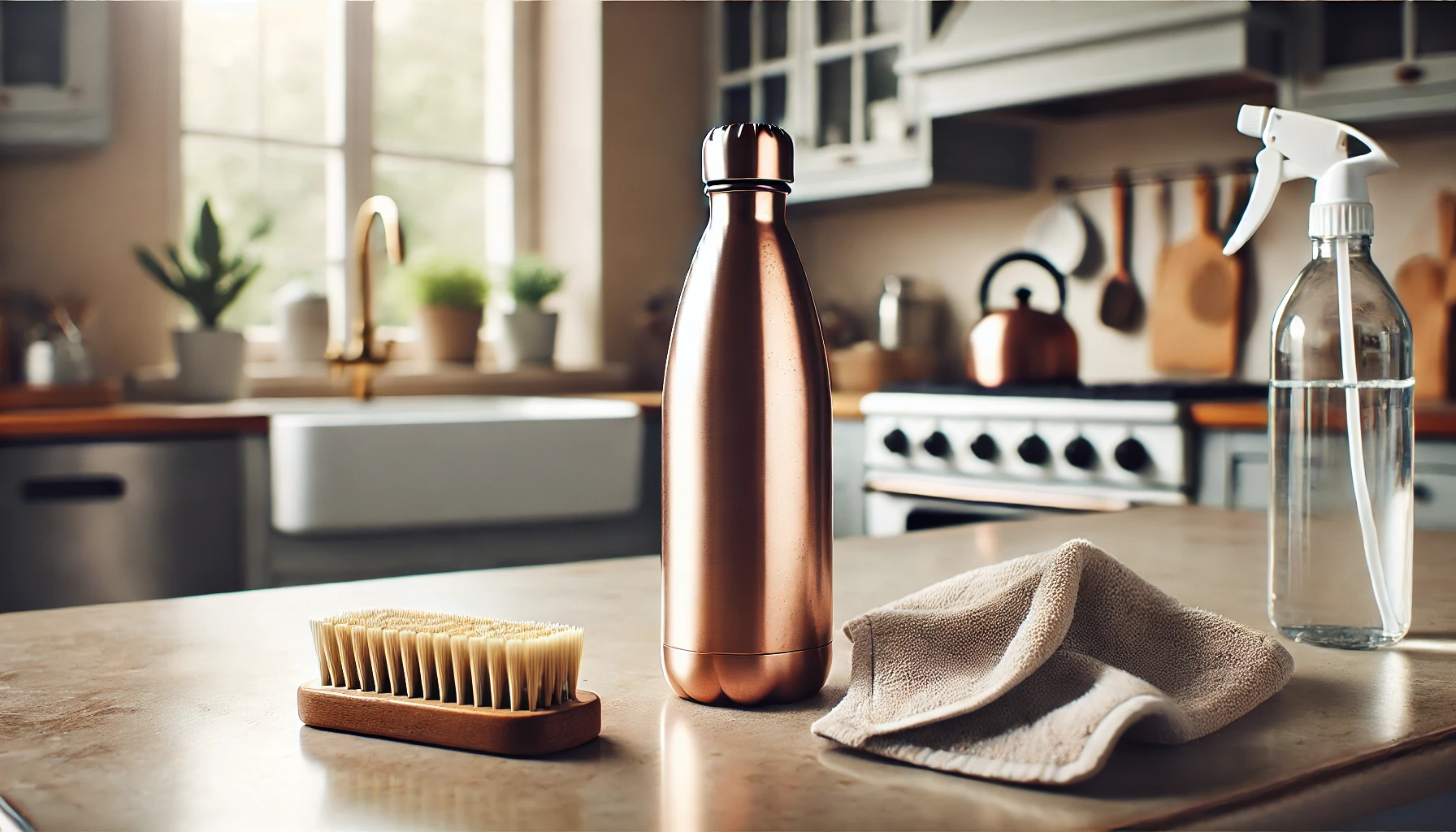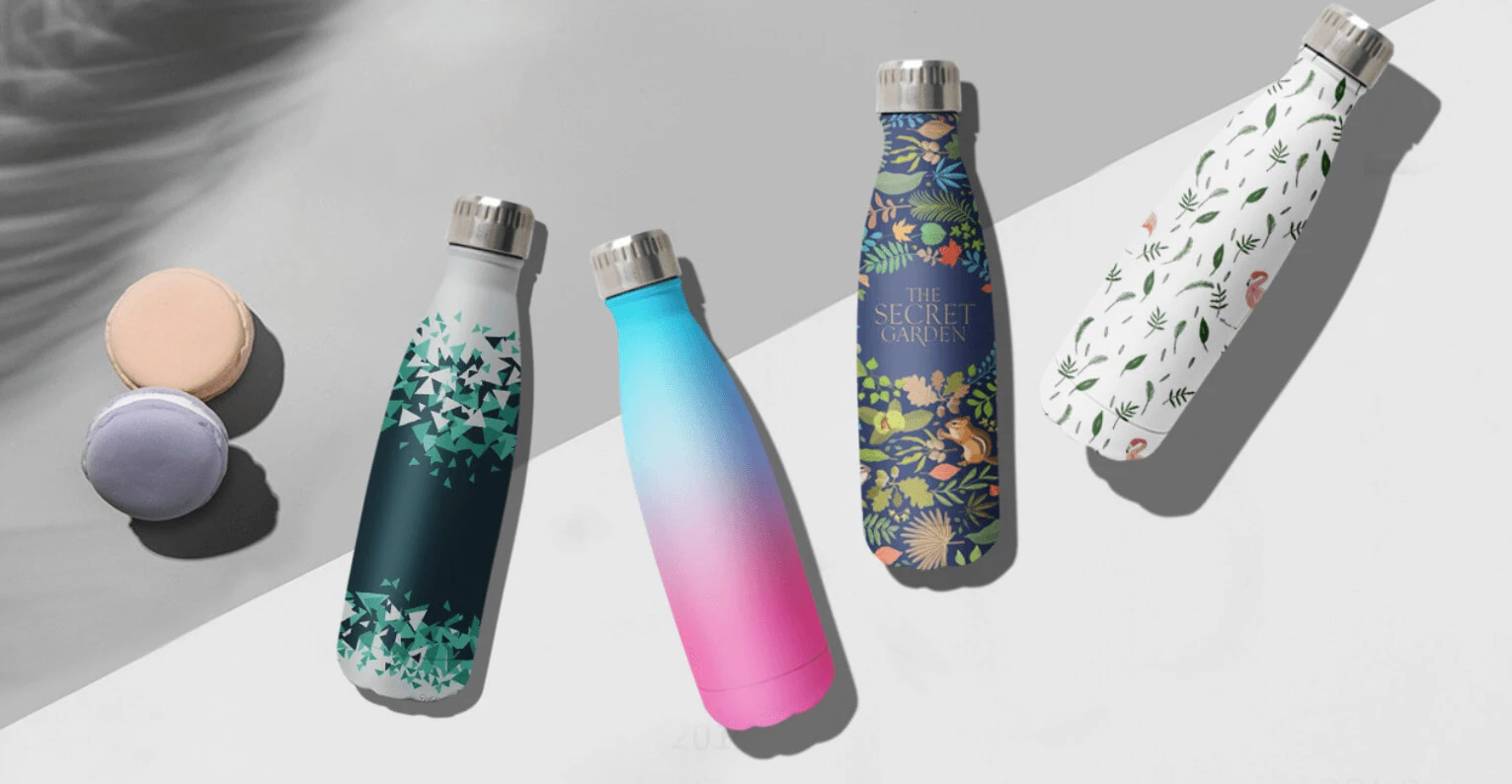
When it comes to choosing a water bottle, two materials often come up: copper and stainless steel. Both have their strengths, but which one is better for your health and daily use?
Copper and stainless steel are popular choices for water bottles, but each offers unique benefits and drawbacks. Which is right for you depends on factors like safety, insulation, and durability.
In this article, we'll break down the pros and cons of both copper and stainless steel water bottles to help you make an informed choice.
Which is better, copper or steel water bottles?
The choice between copper and stainless steel for your water bottle often boils down to personal preference, but let's examine the key differences between the two.
Copper bottles are known for their antimicrobial properties1, while stainless steel bottles are highly durable and often more affordable.
Copper Water Bottles: Pros and Cons
Copper bottles are touted for their ability to kill harmful bacteria and germs, making them an appealing choice for some users. They have natural antimicrobial properties, meaning they can help purify water as it sits in the bottle. Additionally, copper bottles offer an aesthetic appeal, often featuring an elegant, shiny finish. However, copper can react with acidic liquids like lemon water, and its surface may tarnish over time.
One of the most important concerns with copper bottles is the risk of copper poisoning2. If you drink from a copper bottle regularly and it’s not properly maintained or cleaned, it could lead to excessive copper intake, which may be harmful.
| Pros | Cons |
|---|---|
| Antimicrobial | Can tarnish over time |
| Aesthetic appeal | Risk of copper poisoning |
| Unique and stylish | Reacts with acidic liquids |
Stainless Steel Water Bottles: Pros and Cons
Stainless steel bottles, on the other hand, are widely known for their strength, longevity, and ability to withstand wear and tear. They are generally more resistant to corrosion and rust compared to copper bottles. Stainless steel water bottles are ideal for keeping your water cool or hot, thanks to their excellent insulation properties3. Unlike copper, stainless steel does not pose any significant risk of leaching harmful substances into your water.
However, stainless steel bottles are not completely without drawbacks. They are often heavier than plastic bottles, and some may find the taste of water stored in stainless steel to be slightly metallic. Additionally, although they are durable, stainless steel can scratch and dent more easily than copper, especially when exposed to hard surfaces.
| Pros | Cons |
|---|---|
| Durable and strong | Heavier than plastic bottles |
| Excellent insulation | May develop scratches or dents |
| Does not react with water | Slightly metallic taste |
Is drinking water from stainless steel safe?
The short answer is yes, drinking water from stainless steel bottles is completely safe.
Stainless steel is non-toxic, does not leach harmful chemicals into your water, and is considered safe for long-term use.

Stainless Steel Safety: What You Need to Know
Stainless steel is known for its durability and non-reactive properties. Unlike plastic, it doesn’t contain harmful chemicals like BPA, which can leach into your water, especially when exposed to heat. Stainless steel also doesn’t interact with water, which means you don’t have to worry about the bottle affecting the taste of your drink. This is one of the reasons why stainless steel is considered one of the healthiest materials for storing liquids.
Furthermore, many stainless steel water bottles are made with food-grade stainless steel4, which is specifically designed for direct contact with food and beverages. As long as you purchase high-quality bottles from trusted manufacturers, you can rest assured that your water is safe and free from harmful contaminants.
| Feature | Explanation |
|---|---|
| Non-reactive | Does not affect taste or quality |
| Food-grade material | Meets strict safety standards |
| Free from harmful chemicals | BPA and phthalates-free |
How do you know if your water bottle has lead?
Lead is a toxic substance that should never be present in any water bottle. While the majority of modern water bottles are lead-free, it’s still essential to ensure the safety of your bottle before use.
To avoid lead exposure, ensure that your water bottle is certified to be free from toxic substances like lead.
Checking for Lead in Your Water Bottle
One of the best ways to check if your water bottle contains lead is to look for certifications such as BPA-free or FDA-approved. Reliable manufacturers often provide clear labeling that confirms their products meet safety standards.
For additional peace of mind, you can also purchase a lead testing kit5. These are widely available and provide quick results to verify whether any dangerous metals are present in your bottle.
| Tip | Explanation |
|---|---|
| Look for certification | FDA-approved or BPA-free labels |
| Use lead testing kits | Available online for peace of mind |
| Check for reputable brands | Trusted manufacturers follow standards |
What are the negatives of copper water bottles?

Copper water bottles can offer some great benefits, but there are also several drawbacks to consider.
Copper bottles are prone to tarnishing, and improper use can lead to copper poisoning.
Risks and Maintenance of Copper Water Bottles
Copper bottles are highly reactive with acidic liquids, which can lead to damage to the interior lining of the bottle. For instance, if you use your copper bottle for beverages like lemon water or juices, they may erode the surface and cause copper leaching into your drink.
This can potentially result in copper toxicity6, a condition where too much copper is absorbed into the body, leading to nausea, vomiting, and even liver damage. To prevent this, copper bottles need to be properly maintained and cleaned regularly to avoid tarnishing and the buildup of harmful substances.
| Risk | Mitigation |
|---|---|
| Copper poisoning | Clean regularly, avoid acidic liquids |
| Tarnishing and corrosion | Use a liner, polish the bottle |
| Reactivity with water | Avoid using for citrus-based drinks |
What are the disadvantages of a stainless steel water bottle?
While stainless steel bottles are often praised for their durability, they also come with a few downsides.
Stainless steel bottles are heavier than plastic and may retain a metallic taste in your water.

Stainless Steel Bottles: Common Drawbacks
Stainless steel bottles are typically heavier than plastic bottles, which can be a disadvantage if you are looking for something lightweight and portable. They are also prone to showing scratches, especially if you drop them or store them with other hard objects.
Another issue some users face is the metallic taste that can sometimes be present in water stored in stainless steel bottles. While this isn’t harmful, it can affect the enjoyment of your drink. Fortunately, this can often be mitigated by cleaning your bottle properly or using an inner lining.
| Drawback | Solution |
|---|---|
| Heavier than plastic | Choose smaller, lighter models |
| Metallic taste | Clean regularly, consider lining |
| Scratches and dents | Handle with care, use a sleeve |
Which is the best metal for a water bottle?
When choosing the best metal for a water bottle, it largely depends on your needs and preferences.
Stainless steel is often the top choice for durability and insulation, while copper offers antimicrobial benefits.

Comparing Copper and Stainless Steel for Durability
In terms of durability and insulation, stainless steel is hard to beat. It is virtually indestructible and can maintain your water's temperature for hours. Copper, on the other hand, is more prone to damage and can tarnish over time, requiring more maintenance.
Copper: Best for Antimicrobial Properties
Copper is excellent for people looking for a natural way to purify water due to its antimicrobial properties. However, copper bottles require more maintenance and care than their stainless steel counterparts.
| Metal | Best Use Case |
|---|---|
| Stainless Steel | Durability, insulation, long-term use |
| Copper | Antimicrobial, natural purification |
What is the healthiest material for a water bottle?
When considering the healthiest material for a water bottle, both copper and stainless steel have distinct advantages.
Both copper and stainless steel are safe options for drinking water, but stainless steel is often considered the healthiest due to its non-reactive nature.
Health Considerations: Copper vs Stainless Steel
Stainless steel is considered one of the healthiest materials for water bottles due to its non-toxic, non-reactive nature7. It doesn’t leach harmful substances into your drink, unlike some plastics or poorly manufactured metals. Copper, although beneficial for its antimicrobial properties, poses potential health risks if not maintained properly.
| Material | Health Benefits |
|---|---|
| Stainless Steel | Non-reactive, BPA-free, food-safe |
| Copper | Antimicrobial, may cause toxicity |
Which bottle is best for drinking water?
The best water bottle depends on your lifestyle and needs. If you're looking for durability, insulation, and easy maintenance, stainless steel is your go-to choice. However, if you want a bottle with natural antimicrobial properties and don’t mind regular upkeep, copper is a good option.
Stainless steel is often the preferred choice for most due to its durability, safety, and ease of use.

Choosing the Best Bottle for You
Ultimately, the decision comes down to your personal preferences and what you prioritize in a water bottle. Stainless steel is durable, safe, and easy to care for, while copper can offer natural purification but requires more attention.
| Best For | Stainless Steel | Copper |
|---|---|---|
| Durability | Excellent, highly durable | Prone to tarnishing |
| Safety | Non-reactive, BPA-free | Risk of copper toxicity8 |
| Maintenance | Easy to maintain | Requires regular upkeep |
Conclusion
Both copper and stainless steel water bottles have their pros and cons. For most people, stainless steel is the safest and most practical choice.
-
Understanding the non-reactive nature of stainless steel can highlight its safety and health benefits, making it a superior choice for daily use. ↩
-
Learning about the risks of copper toxicity is crucial for making informed decisions about using copper water bottles safely. ↩
-
Exploring the health benefits of antimicrobial properties can help you understand why copper bottles might be a healthier choice for daily hydration. ↩
-
Understanding how to prevent copper poisoning is crucial for safely using copper water bottles and ensuring your health is not at risk. ↩
-
Learning about the insulation properties of stainless steel bottles can help you decide if they're the right choice for keeping your drinks at the desired temperature. ↩
-
Exploring the safety standards of food-grade stainless steel ensures you're choosing the healthiest option for your hydration needs. ↩
-
Using a lead testing kit can provide peace of mind by ensuring your water bottle is free from harmful substances. ↩
-
Understanding the health risks of copper toxicity can help you take preventive measures when using copper water bottles, ensuring your safety and well-being. ↩

